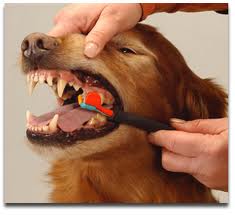Be prepared. Learning pet first aid and CPR is one way to be prepared, but you still need to take a couple more steps.
Ø Know where your emergency veterinarian is located. Your regular vet may only be open from 9:00 a.m. to 6:00 p.m. So what do you do when your vet is closed for the night? Always have an emergency vet that you can go to in case of an emergency where your regular vet is not available. And don’t just have the address and phone number on hand, DRIVE THERE! When there is an emergency you are more likely to panic and become disoriented which might turn a simple drive to the vet into a nightmare of wrong turns and wasted precious time. Here is a list of local emergency veterinarian offices. Find out which office is closest to you (considering traffic) and then take a drive to visit the facility.
VCA Aacacia Animal Hospital- 939 West Sixth Street, Corona 951-254-2993
Yorba Regional Animal Hospital- 8290 E. Crystal Drive, Anaheim 714-921-8700
Animal Emergency Clinic- 12022 La Crosse Ave., Grand Terrace 909-825-9350
California Veterinary Specialists – Emergency clinics in Murrieta, Ontario, and Carlsbad
Ø Have a pet first-aid kit on hand. Having a human first-aid kit is better than not having any kit at all, but dogs and cats do have different needs that require different tools. For example, if your dog gets a cut on his back leg a band-aid will not stay on nor keep the wound clean, no matter how sticky it might be. And while your dog may normally be the sweetest creature on Earth, she may not be so sweet once she is under extreme stress from an injury. According to First-aid expert, Denise Fleck, your first aid kit should include the following items:
· 4x4 gauze squares- to control bleeding and dress a wound
· Rolled gauze- to secure the gauze squares and further protect the wound from dirt and bacteria
· Adhesive tape or self-adhering bandage- to secure the rolled gauze
· Styptic powder & cotton swabs- to control minor bleeding (such as broken toe nails). Corn flour or starch will also work in place of styptic powder.
· Blunt-nosed scissors- the purpose of blunt nose is to avoid accidentally stabbing your pet while attempting to remove a bandage or anything else.
· Tweezers- to remove small objects like ticks, stingers, or debris from a wound
· 3% Hydrogen Peroxide- to induce vomiting. Dosage: 1tablespoon per 15lbs of pet’s weight.
· Eye wash or Saline solution- to flush minor wounds or eyes
· Antibiotic ointment- to soothe and promote healing in minor cuts, scrapes, or bug bites
· Needless syringe- to administer medications and other liquids
· Digital Thermometer- to check your pet’s temperature (normally between 100.4˚ - 102.5˚ Fahrenheit)
· Antihistamine tablets- for bee stings and snake bites. Dosage: 1mg per pound of pet’s weight. Double dosage for snake bites.
· Antacid tablets- to soothe upset stomach. Mylanta works for cats and dogs.
· Electrolyte replenisher- to aid in rehydration
· Leash- to wrangle a pet in need of help or use as a temporary muzzle
· Towel or blanket- to treat for shock, help transport or restrain a pet
· Pet First-aid handbook- to assist with important details you need to know
o Phone numbers and address to your regular veterinarian as well as the emergency veterinarian.
o Your dogs vaccination records, list of current medications and medical conditions.
This list gives you the ability to put together your own first-aid kit, or several kits for different areas of the house or for your family and friends. But if making your own pet first-aid kit is a job you would rather leave up to the professionals you can simply purchase one, ready-made. Check out the Pet First-aid kits available through Denise Fleck at SunnyDogInk.com














